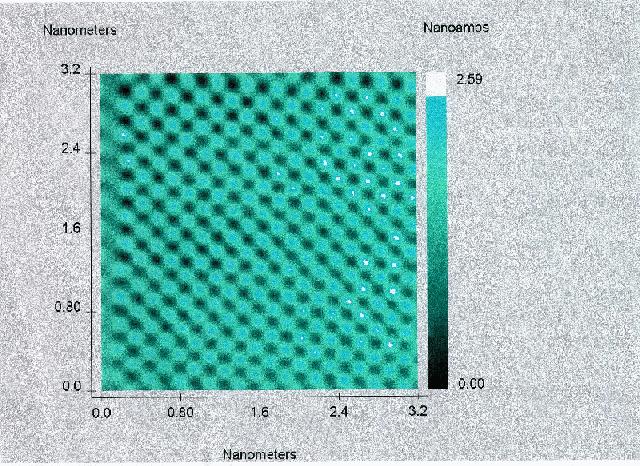
Scanning Tunneling Microscope
The Scanning Tunneling Microscope (STM) is a machine that is designed to analyze extremely fine surfaces. The way it works is that you cut a platinum - iridium wire with a pair of special pliers, by hand, and you hope that you've cut the tip of the wire so well that only one atom is attached at the very end. This part of an experiment is mostly a matter of luck.
After that is accomplished you can pass the tip over a prepared sample that has conductive goo sprayed on it as you run a charge through the tip. Quantum Mechanics states that the electrons that are running around the tip have a non-finite chance of jumping from the tip to the sample, even though they aren't actually touching. As the tip gets very close some of the electrons will, in fact, jump from the tip to the surface below and we'll know that they jumped because the current will get that much weaker. This is why we want only one atomic site on the tip-so that we don't have a lot of points that are close to the sample-than we'd be mapping several distinct points instead of one.
So we can use variations in the current to map the surface on a fairly fine scale. When we calibrate the STM using a gold grating this only results in an exceptionally good picture of the surface of the grating-but later on, when we use highly oriented pyrolytic graphite, we can actually see atomic sites within the material!
Here is an image, contributed by Robert Carver and James Little, showing the graphite image. The bright dots are visible atomic sites.
